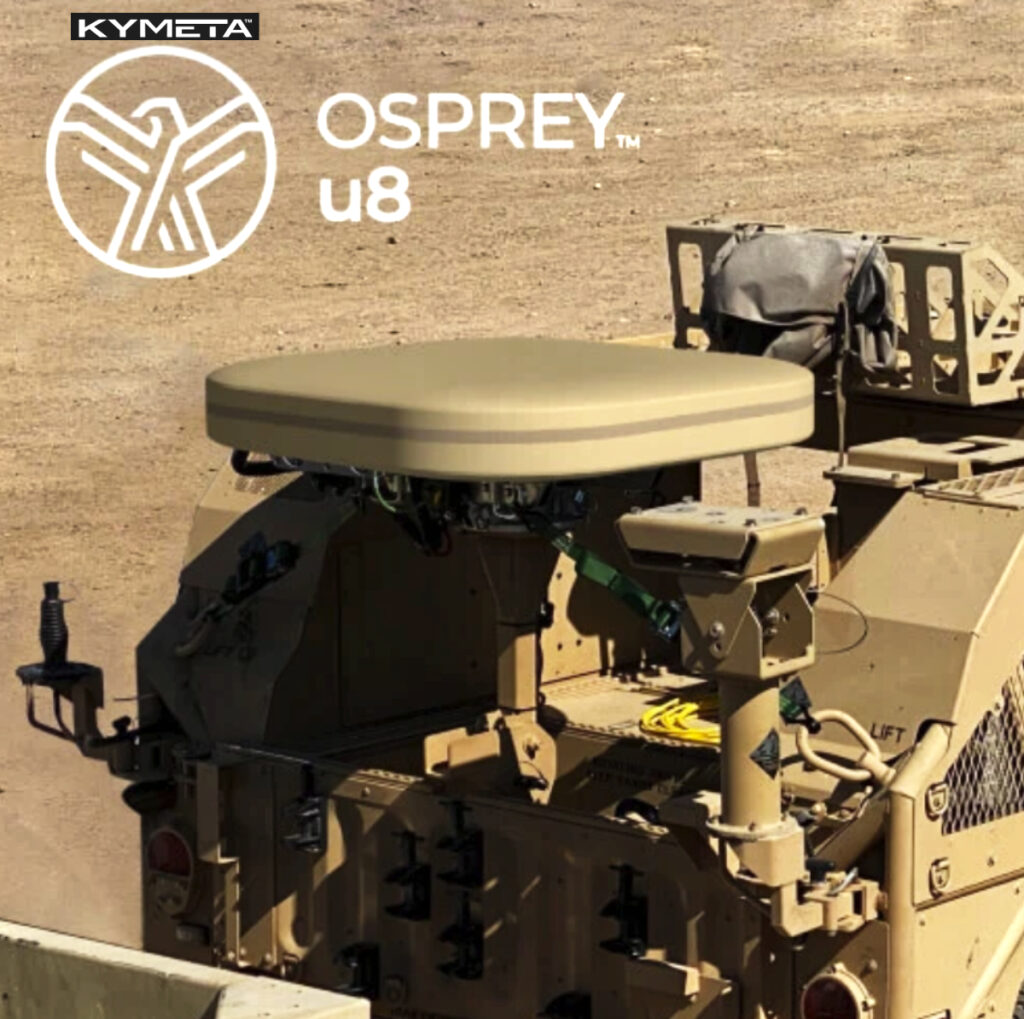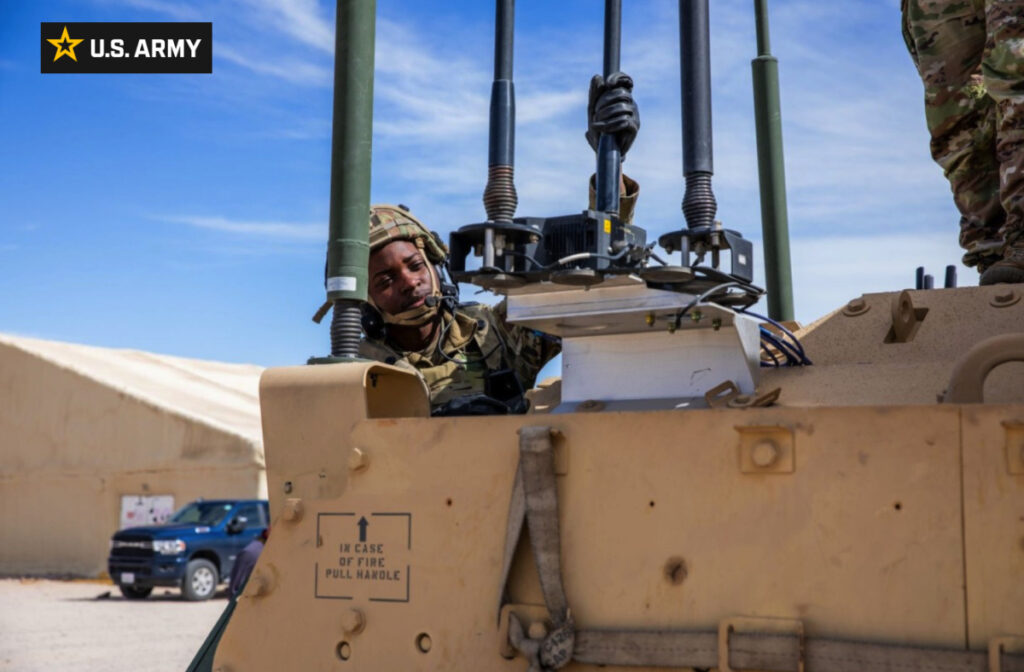
Kymeta Corporation has been selected as a multi-orbit satellite communications (MILSATCOM) provider for the U.S. Army’s Next Generation Command and Control (NGC2) Pilot with the firm’s Osprey™ u8 terminal.

Bundling LEO, GEO, TRANSEC, and cellular capabilities into a single package empowers warfighters with a turnkey service that unlocks the full potential of the Osprey u8. The bundled plan allows users to share data across multiple user terminals globally, giving operators maximum flexibility to deploy bandwidth where and when it’s needed.
Selected for its battle-proven capabilities and easy-to-use features, all developed with the modern warfighter in mind, Kymeta terminals offer full-duplex data transport, meaning they can receive and transmit from a single aperture. The Osprey u8 provides multi-orbit connectivity across both Geostationary Orbit (GEO) and Low Earth Orbit (LEO) satellite constellations, featuring a modular, cartridge-based system designed for rapid adaptation to evolving mission profiles.
By supporting multiple data pathways, including commercial and government networks, the terminal minimizes dependency on any single source, prioritizing secure interoperability and operational continuity, even in degraded or contested conditions, making it a valuable asset for mission-critical applications.
The U.S. Army’s NGC2 pilot underscores the importance for dispersed teams to stay mobile in increasingly data-centric operations. Kymeta’s technology, based on metamaterials and software-defined features such as proprietary pointing and tracking, enables superior performance and efficiency for Communications On-The-Move (COTM) and Over The Horizon (OTH), thereby increasing the ability for forces to maneuver and remain survivable on the battlefield.

Another critical advantage of Kymeta’s technology is its significantly lower power consumption compared to similar solutions across the industry. This makes it a perfect platform for COTM and contributes to its reduced thermal signature relative to competing technologies. This reduced thermal output combined with other Low Probability of Detection and Intercept (LPD/LPI) features, such as low profile and narrower beamwidth, allow the Osprey u8 to become less detectable when operating in hostile environments.
U.S. Army assessments including ‘Armored Formation Network On The Move,’ ‘Network Modernization Experiment (NETMODX),’ and ‘Project Convergence Capstone’ were critical in informing their decision to select Kymeta’s technology.
Tom Jackson, EVP Kymeta, Chief Revenue Officer and retired U.S. Marine Corps Lieutenant Colonel, said, “Kymeta has several technological advantages over similar solutions currently available. These advantages are rooted in our metamaterials-based architecture, which enables us to create terminals that use less power than others on the market. Other terminal manufacturers can try to engineer around this, but they can’t replicate the technology that sits at the core of our product line. This approach to manufacturing is the exact type of innovation the U.S. Army is looking for when it seeks new technologies from the commercial market to integrate into its existing capabilities. My experiences in the military equipped me with a crystal-clear perspective on how critical resilient, secure communications are to mission success. When operating in unpredictable, high-stakes environments, modern units can’t afford downtime, complexity, or systems that give away their position. This move from the U.S. Army is a clear indication that they recognize that network resiliency is no longer a nice-to-have, it is an absolute necessity.”
